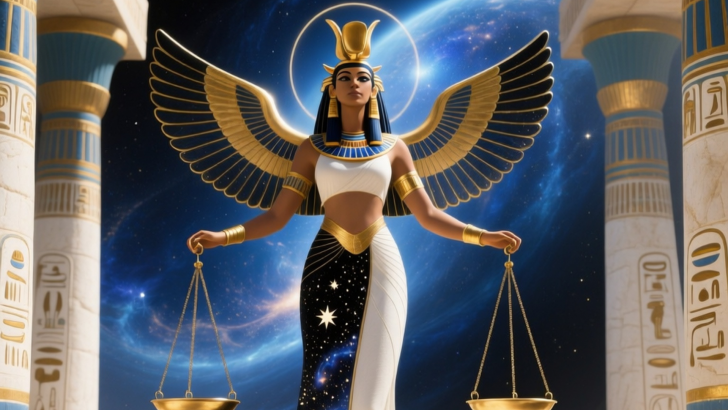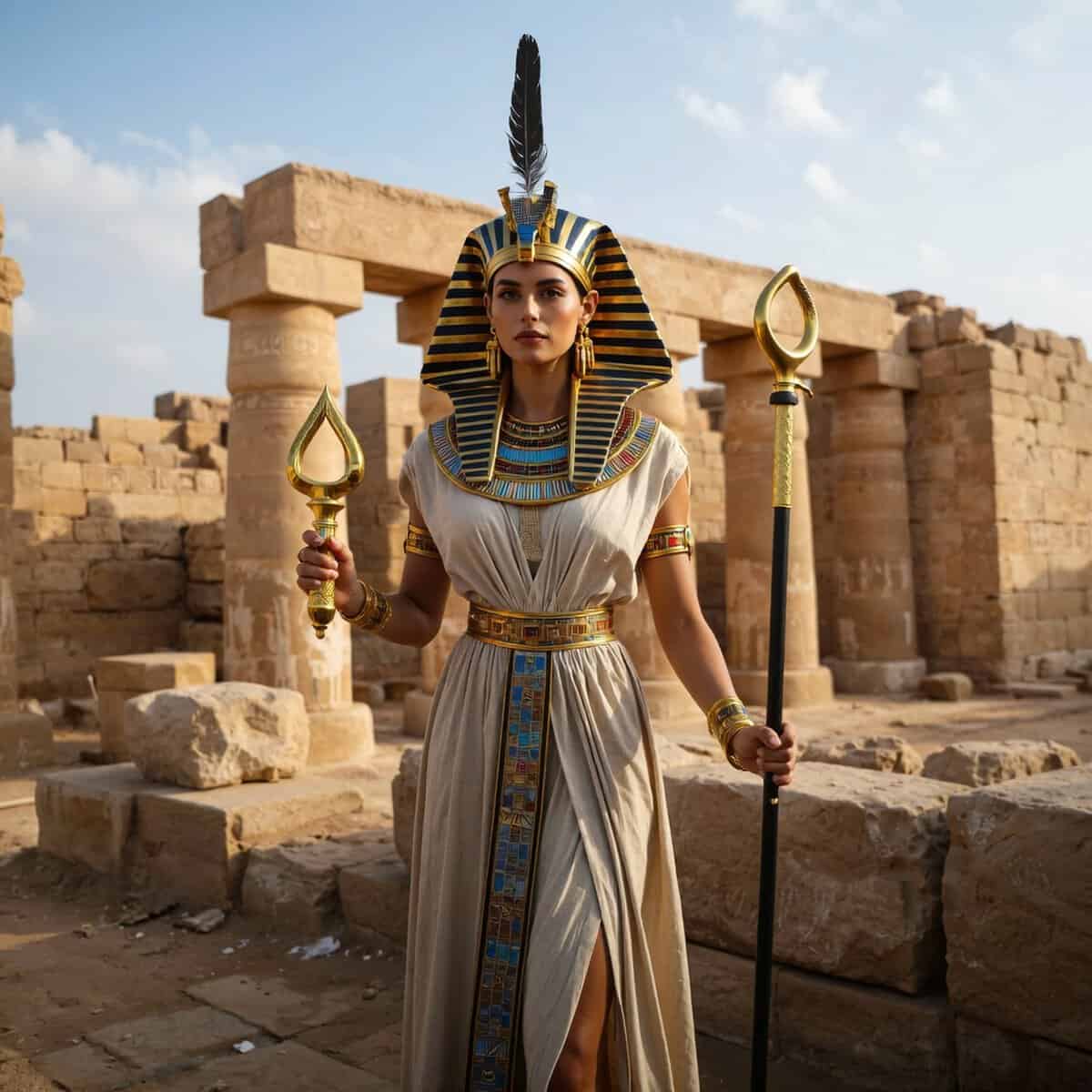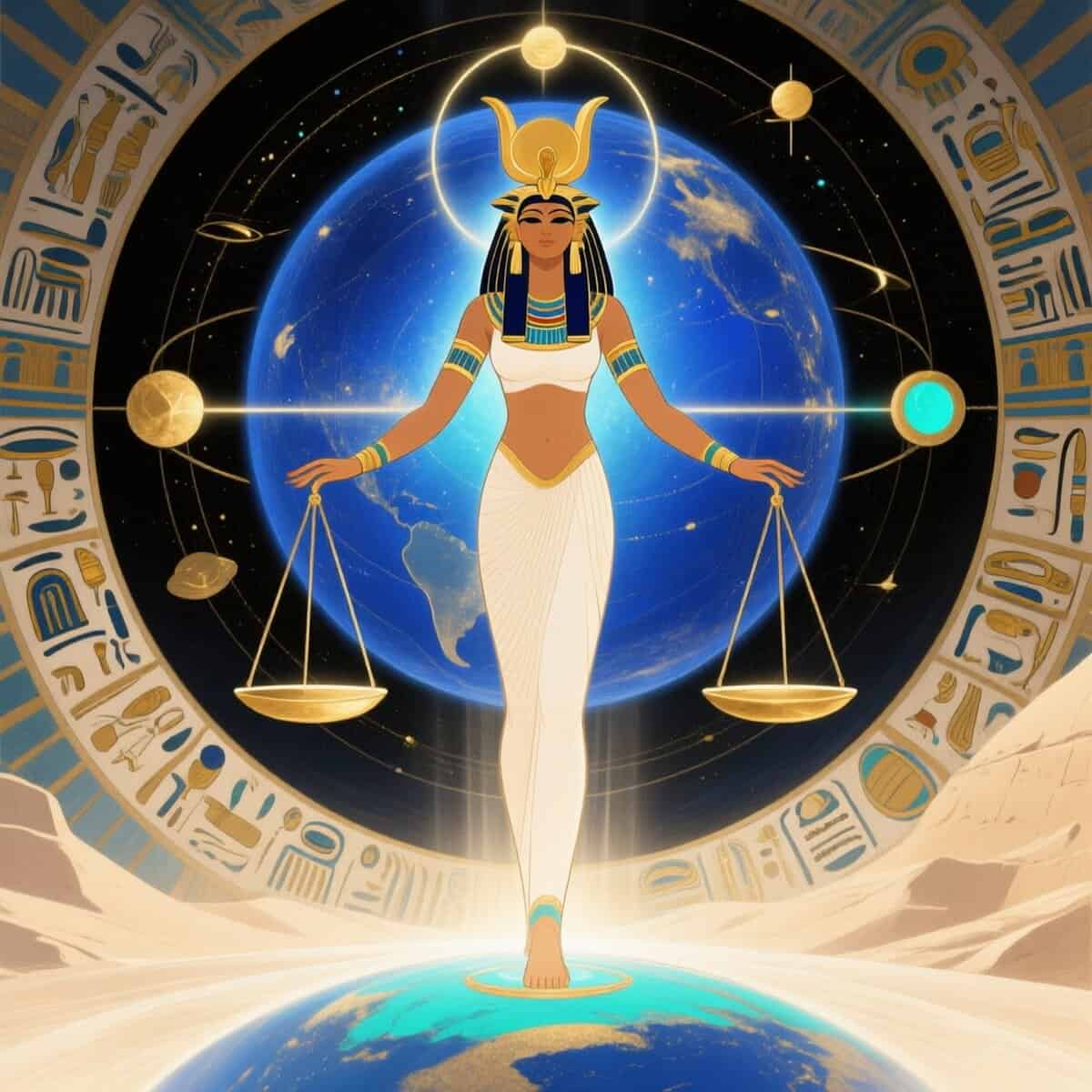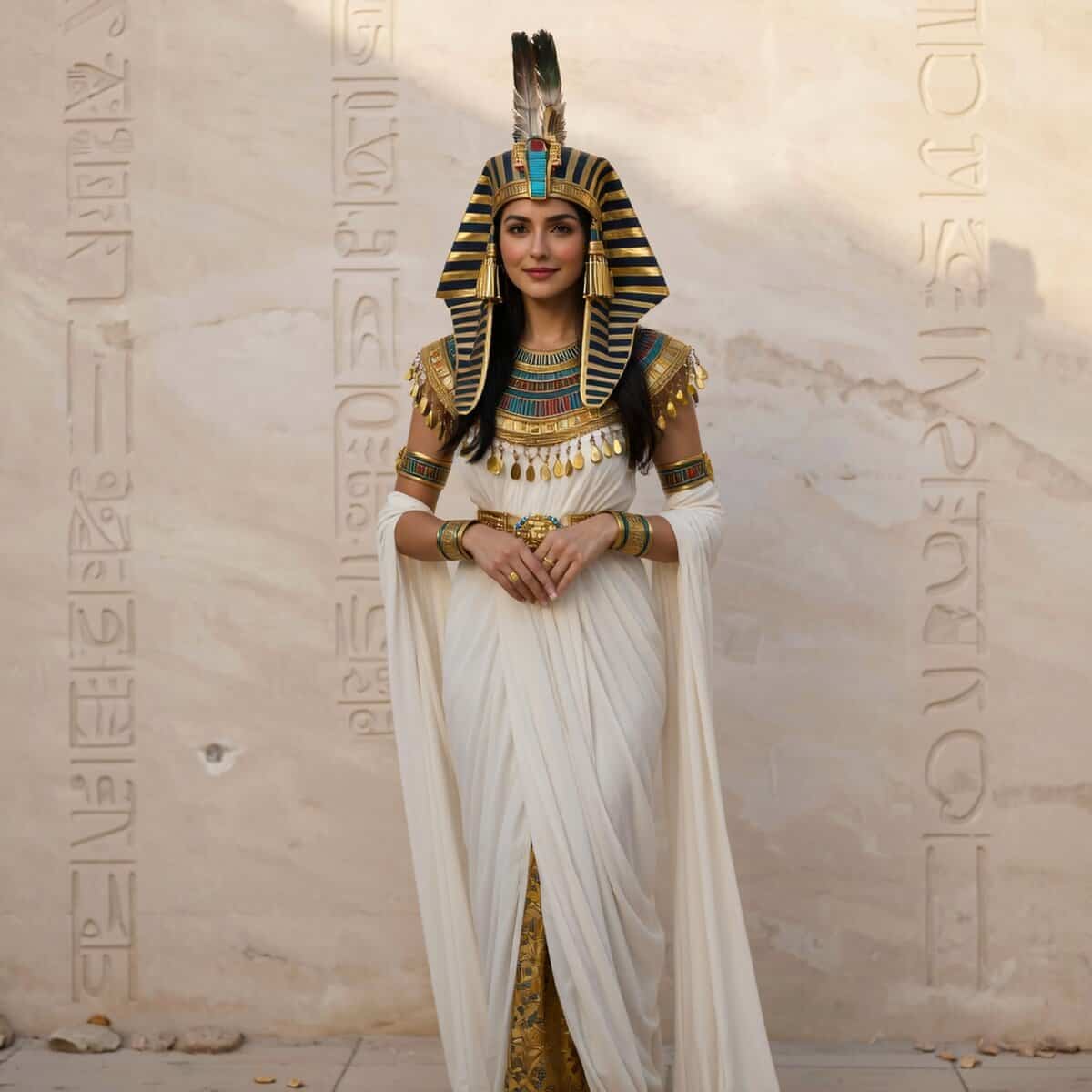Ma’at was one of the most important goddesses of the ancient world.
Ancient Egyptians believed that she was the one who held together the whole universe, that she possessed the 知恵 no other deity had, and that she taught us that balance was holy.
彼女 フェミニン power of judgment and 均衡 was what held everything together.
The Divine Principle Behind Ma’at
Ma’at was more than a goddess in ancient Egypt; she was the living embodiment of バランス. Egyptians believed she symbolized the principles that governed the sky, earth, and underworld in harmony.
Her name symbolizes honesty, justice, and rightness. She was the spiritual thread that tied all life together. Pharaohs reigned in her name, believing their job was to maintain her law in both society and the universe.
Without Ma’at, everything would collapse into chaos. Her energy wasn’t about control but about flow: the natural pattern of life in perfect harmony.
To the Egyptians, she wasn’t a faraway deity but a reminder that every word, act, and thought could either preserve harmony or disturb it. Ma’at was the heartbeat of development, the continuous equilibrium between opposites that permitted the universe to stay whole.
The Feather That Judged the Soul
Her feather was one of Ma’at’s most striking symbols. It was the holy measure of the soul’s truth after death. Egyptians thought that the ハート of the dead person was weighed against Ma’at’s feather in the Hall of Judgment.
If the heart was light, the soul had lived in honesty and harmony. If it was heavy with lies or cruelty, it was eaten and lost forever. The ceremony meant more than moral judgment; it meant that everyone was on the same page spiritually.
Living with Ma’at means being honest, not hurting others on purpose, and showing respect for both gods and other people. The feather was an indicator that balance wasn’t just a cosmic thing; it was also a personal thing. Every choice was important.
Egyptians knew that the universe didn’t punish or reward people at random because of Ma’at’s feather. Her feminine ability to listen to her intuition and to judge was what truly mattered.
Ma’at’s Role in the Cosmos
The Egyptians thought that Ma’at held the order of the universe in place, which is why the sun rose every morning. Even Ra, the god of the sun, would have trouble with chaos without her. Ma’at’s equilibrium kept things in check, so light won over darkness every day.
This idea was a lyrical way of saying that everything, from the stars to the human heart, needed balance to stay stable. Men needed women and vice versa.
To honor this supernatural structure, people built temples, held ceremonies, and made important laws. People said that Ma’at’s energy was powerful and true since floods came as expected or when there were a lot of crops.
People didn’t worship her out of fear; they did it out of gratitude for keeping creation from falling apart. Her harmony affected every part of existence, reminding people that even the gods needed balance to stay alive. Everything that could be seen and everything that couldn’t be seen was built on and moved by Ma’at.
Living According to Ma’at
Ma’at wasn’t just a cosmic idea for the ancient Egyptians; she was a way of life that was lived every day. Being “in Ma’at” means being honest, fair, and respectful to others. Truth and fairness weren’t merely moral ideals; they were spiritual duties that kept the universe going.
This concept linked human actions to divine order on a spiritual level. People who lived righteously helped to keep the unity that Ma’at stood for. People thought that even tiny acts of kindness or honesty made the universe more stable.
This manner of life made spirituality into something real. Egyptians thought that hurting others or doing something wrong would make Ma’at weaker.
Her impact was shown in their culture, art, and laws. Her equilibrium helped people make decisions in every temple and home. It reminded them that peace within would lead to peace around, and that harmony starts with the self.
Ma’at’s Balance Between Chaos and Order
Isfet, which means confusion, disorder, and deceit, was the exact opposite of Ma’at. The Egyptians thought that these two forces were always in conflict with each other in the universe.
If Ma’at didn’t guide Isfet, it would destroy creation and turn harmony into chaos. This equilibrium wasn’t about getting rid of chaos; it was about keeping it in check. Even in the dark, there was a purpose; even in the fight, there was progress.
Ma’at stood for the ability to find peace in times of doubt. Her power wasn’t to control others, but to understand them and bring them together so the world could work.
The daily sunrise, the Nile’s flow, and the fairness of a good ruler were all real examples of Ma’at’s victory over chaos. The Egyptians believed that this was the ultimate truth: balance is divine, and harmony is not the absence of struggle, but the gracious handling of it.
Why Her Message Still Matters Today
The narrative of Ma’at is still very important today. We live in a time of noise, imbalance, and never-ending work, which are all not feminine traits, and which are similar to the anarchy that the Egyptians feared.
Ma’at’s wisdom reminds us to get back to equilibrium spiritually by being honest, fair, and aware. Living with integrity helps bring peace back to the world around us and to ourselves.
Her lesson shows that love, fairness, and respect are not separate from spirituality; they are spirituality itself. To remember Ma’at is to remember that serenity isn’t something you have; it’s something you work for.
The ancients thought she was the glue that held everything together. Even now, she is a guide that never goes out of style. We need to reconnect with the same divine order that has held the universe together since the beginning of time and live in balance.
We should not be ashamed of our bad sides; we need to keep them in control and work on ourselves to be better every day.
Born and raised in Bosnia and Herzegovina. Ever since I was a little girl, my imagination knew no bounds. I remember vividly how I’d scribble down short stories, each page bursting with adventures and characters conjured up from the whimsy of my mind. These stories weren’t just for me; they were my way of connecting with my friends, offering them a slice of my fantasy world during our playtimes. The joy and excitement on their faces as we dived into my fictional realms motivated me to keep writing. This early passion for storytelling naturally evolved into my pursuit of writing, turning a childhood hobby into a fulfilling career.







